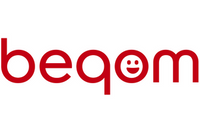How to use technology to create sales incentive programmes that engage and motivate

Making sales incentives engaging needs the right balance of operational vision and financial management – something that is difficult if you are worried about breaking away from a spreadsheet.
When I started out in sales I didn’t have a clue about my sales incentive — I was happy enough to walk out of education and straight into a job that paid well and gave me a company car. I planned to start paying off my student loan and start saving to go traveling.
One day my manager told me I was doing well with my sales, that my MTD was growing faster than my YTD, my YTD was growing faster than my MAT, I had an index of 234, and that I was amassing points for the incentive scheme.
I had no idea what she was talking about.
The sales incentive plan back then was a non-cash points-based system. At the end of the quarter, points were awarded based on a variety of objectives. You could save and carry-over your points, or spend them.
To spend your points, you’d browse through a printed catalogue, turning each page until you spotted something appealing. Then you’d see how many points were needed and save them for another day, wishing you could have the cash instead.
After a couple of years of points saving, I left my job to travel for a year. When I returned to work, I took another sales job. This time the sales incentive plan was cash-based.
A top-down approach
The company employed a top-down approach to setting sales targets, and centrally managing the sales incentive plan, making it clear that there was equal sales potential for all territories. This would have been fine if it were true — there was a tendency for certain reps to call favour with a wholesaler or distributor on their territory to pull off a last-minute win on the leader-board each year.
With sales credited at the point of distribution, it was easy for well-connected employees to play the system. At the time — the mid 1990’s — there was a lack of accurate point of sale data, which is why most companies credited the sales as it was delivered directly to a distributor.
The good news for me was that the company wanted to address these issues, which they did by allowing regional managers to make local adjustments to targets. This was fine in theory, but in practice, it was a nightmare. Hundreds of spreadsheets would be flying this way and that, version control was impossible…as was trying to prove that a local adjustment was necessary on one territory because of an unusual buying pattern on another.
The technology to manage this situation just wasn’t available to ensure fairness. The company went back to a top-down, volume-driven, cash-based incentive plan. Better than nothing but not very motivational.
Around that time, the company appointed a new manager while setting about reorganising the sales team. Now working as pairs per territory, the incentive plan was further modified: earnings from the territory incentive scheme would be split equally within the team, but nothing would be paid unless the company achieved its national sales target.
The modified plan was a total disaster. My partner and I worked fantastically together and smashed our targets but still got nothing because the national target was missed. Competitor companies started to circle ready to poach the dissatisfied sales team.
My manager moved in to calm the situation. The first thing he suggested was for me and my team partner to start taking every Wednesday afternoon off together to go and do something away from work. We both enjoyed climbing so we’d head off to the local climbing wall after lunch.
The second thing he did was to tell us not to worry about the incentive scheme objectives and to focus on our inputs, our behaviours. We already had a performance management system in the company, but he wanted to go deeper into specific sales behaviours, stating that if the inputs were right, then the results would come.
Unknown to my team-mate and I, our manager was negotiating with his management to pilot his vision for the incentive plan. This, he hoped, would do away with sales targets and focus on inputs, rewarding the right behaviour. Additionally, he argued that there needed to be flexibility in how his team was rewarded – one size did not fit everyone, and he wanted to legitimise the paid time-off we were taking.
For the next 18 months, we had a ball. The regional team was super motivated and happy. Everyone was highly engaged, focusing on the right behaviours and going the extra mile for our bespoke incentives.
The reality was that there were only three variations of the same plan – some of us wanted a mix of cash and paid time-off, others cash only, and one person wanted a grant for a marketing diploma. The objectives were essentially the same, with a few tweaks here and there for specific needs.
Our manager had got it right. By using the incentive plan to drive the correct behaviours we won the Region of the Year award back-to-back, and the rest of the sales organisation looked to us as the team to beat.
Could it last?
Unfortunately not. Given the flexible nature of our local incentive plan and the potential variations across the country, it was impossible to scale if it were to be managed centrally. Head office did not want to de-centralise control of the scheme either, so the pilot ended. With the technology to manage the situation still not available, the company went back to a top-down, volume-driven, cash-based reward—even though the plan had clearly benefited from including both intrinsic and extrinsic incentives.
Fast forward to today and technology is no longer the issue. My manager at the time had been thwarted by the lack of technology. Now though, with the right software you can devise a plan your sales team needs — points based, cash-based, individualised, capped, uncapped, lag measures, lead measures, centralised, localised, gamified, linked to performance, succession and talent management—even as part of a total compensation approach.
The task now is to challenge traditional thinking—one size does not fit everyone anymore. The tailored approach should not be considered maverick, and SPM should focus on inputs to change or reinforce behaviour, to drive a return, and not simply to compensate to the sales team.
To do that optimally we must take a more tailored approach to inputs and payment where individual exceptions become the norm.
John Sturgess is head of training at Beqom.
This article was supplied by Beqom.
Supplied by REBA Associate Member, beqom
We provide a Total Compensation cloud solution addressing all aspects of compensation&performance.







